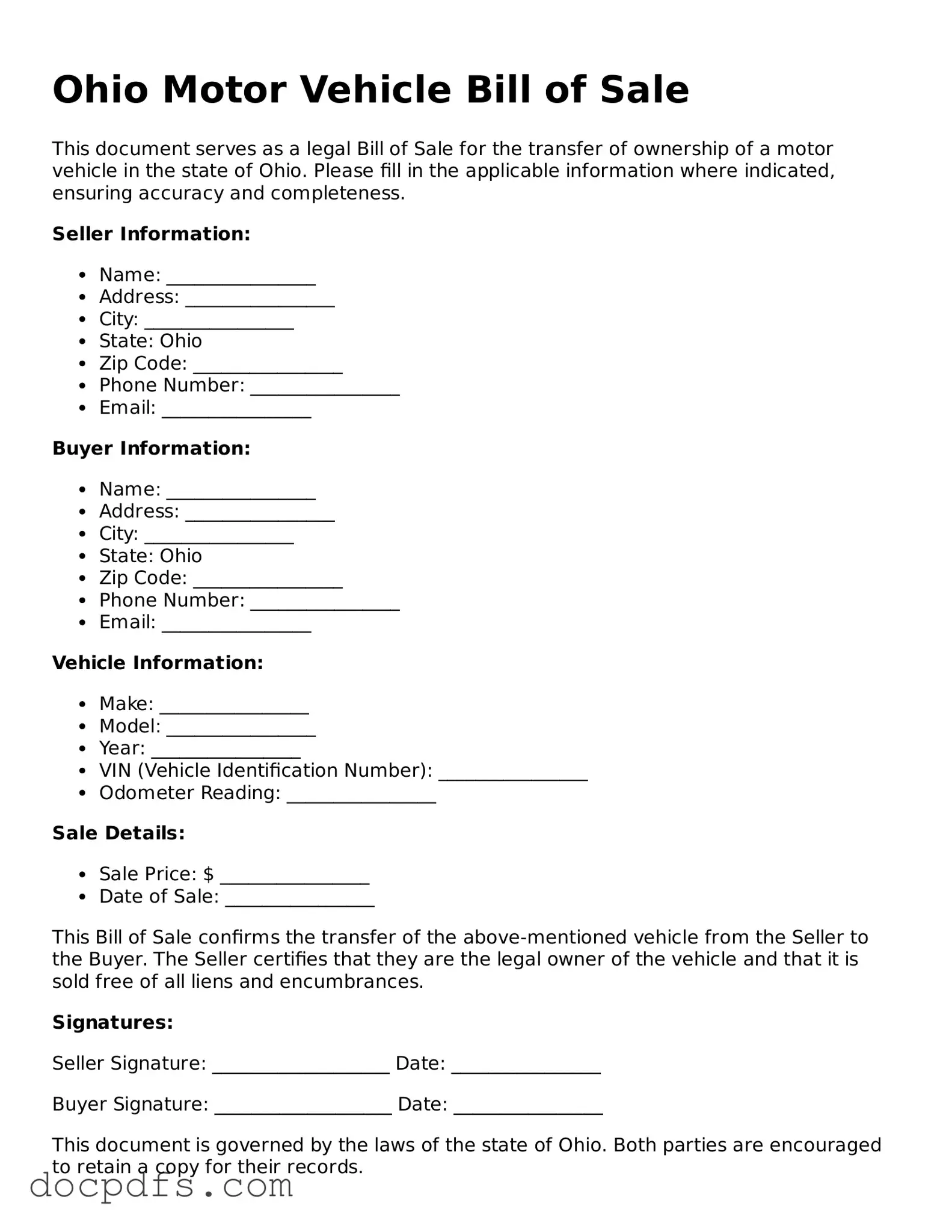Free Ohio Motor Vehicle Bill of Sale Form
The Ohio Motor Vehicle Bill of Sale form is a legal document that serves as proof of the sale and transfer of ownership of a motor vehicle in Ohio. This form is essential for both buyers and sellers, ensuring that all necessary information is recorded accurately. Understanding its components can simplify the vehicle transfer process and protect the interests of all parties involved.
Open Motor Vehicle Bill of Sale Editor Now
